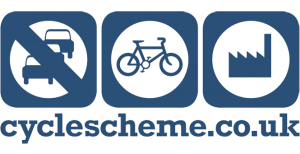1 RACE, TWO RIDERS, 13 DAYS, 4,200km…
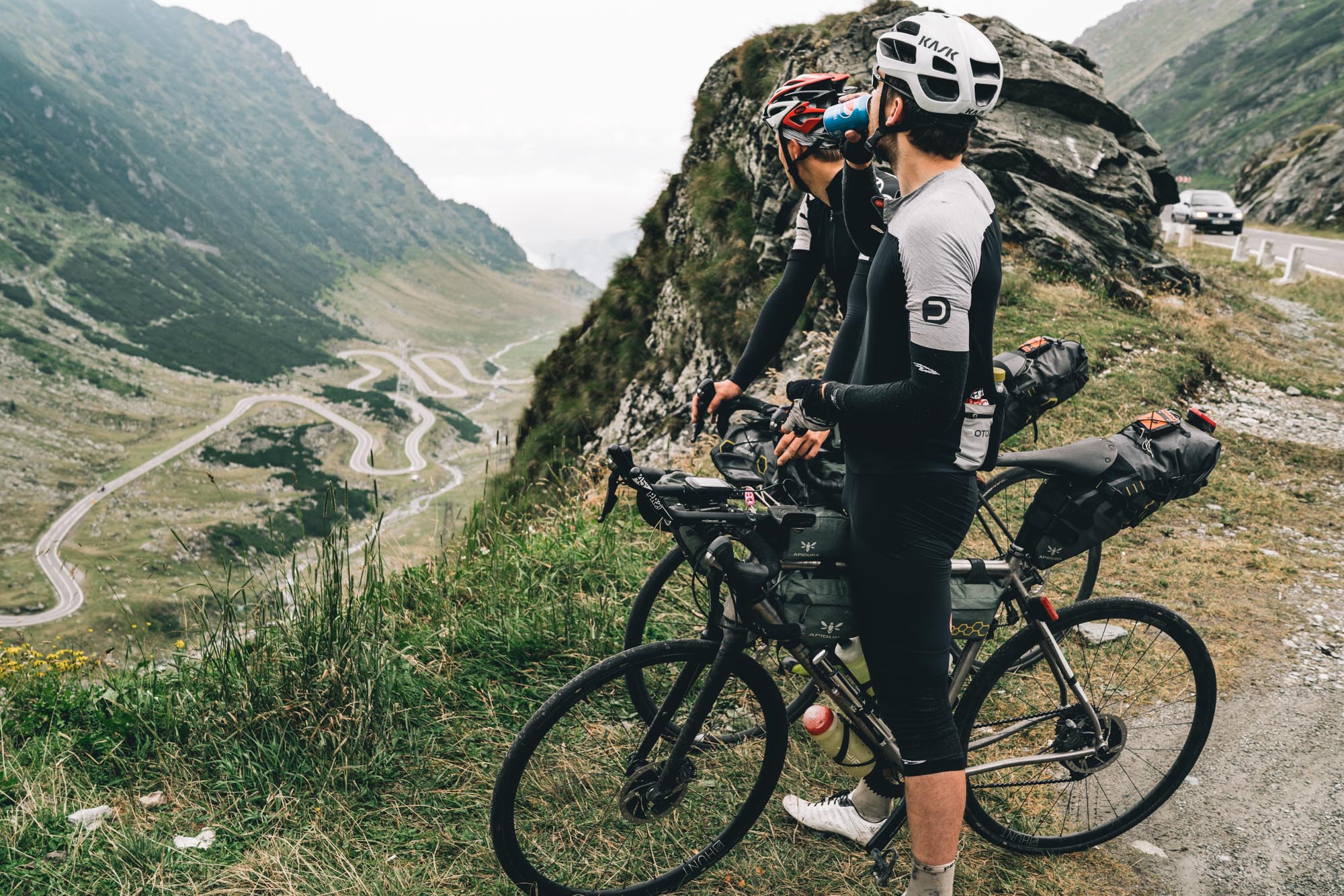
Travelling light, Eivind and Anders still allowed themselves the luxury of a change of clothes in their packs.
No cyclist likes an enforced detour on a route, unplanned extra miles when the terrain is hilly and the temperatures hostile. But when there are 3,500km in your legs, and another 500km to go, it takes a special kind of mental fortitude rider to accept an 80km detour and keep pedalling. The Transcontinental Race draws this type of rider, cyclists who don’t flinch in the face of vicious storms or searing heat. Cyclists who trace a pencil line from Belgium to Greece and can’t wait to ride it. All 4,000-plus kilometres of unfamiliar roads, uncertain surfaces, and unforeseen obstacles.
Feed stations and back-up? Forget it. TCR riders are self-sufficient and unsupported; they fuel monumental efforts on feasts gleaned from backcountry petrol stations; they savour the suffering and the spectacular, the pendulum swinging from endurance to enjoyment and back again.
But even this kind of resolute, resourceful rider can do nothing about a closed border crossing. With the barriers down and the frontier blocked between Serbia and Macedonia, Eivind Tandrevold and his cycling buddy, Anders Syvertsen, had three options: find a room for the night; accept the 100km detour and press on; or give up. Actually, make that two options – TCR riders don’t give up.
“It was 7pm and we thought about getting a hotel, but we decided to push on and try to beat the English pair ahead of us,” said Eivind, a lawyer from Oslo.
So the pair rode on… and on… their Garmin eventually showing they covered 550km non-stop in 26 hours to reach the finish line in Meteora, Greece. Their perseverance paid off, and months after returning home, the Norwegians can bask in the glory of winning the TCR’s pair’s competition.
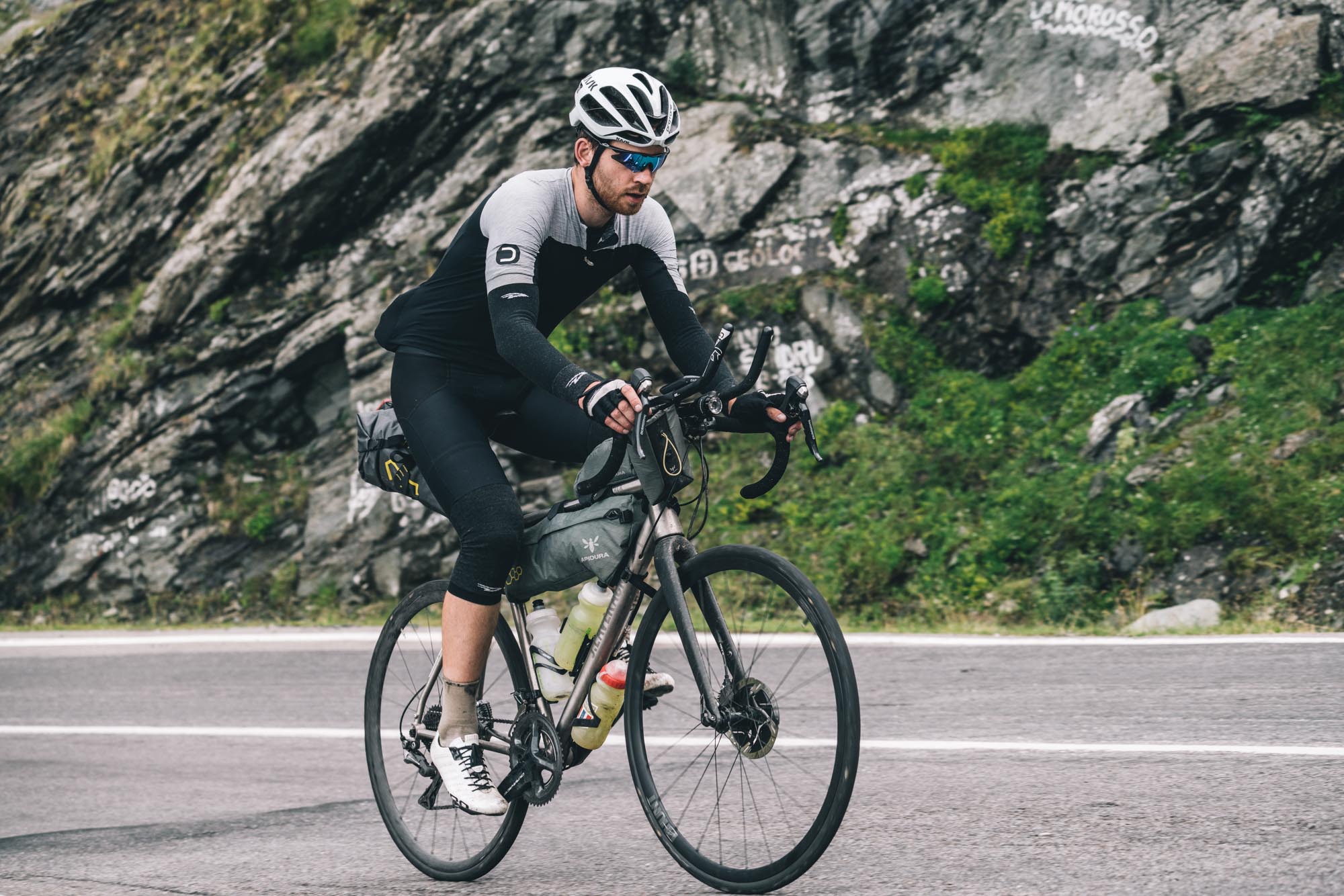
The day Eivind’s J.Laverack bike arrived, he took a train to Kristiansand in the south of Norway and rode through the night for 500km back to Oslo.
Not that they ever intended to race. From the seed of the idea to the startline, their goal was completion rather than competition. Plotting a route across Europe, with only four compulsory checkpoints, was all part of the fun. Riding on studded tyres through the depths of the icy Norwegian winter, in preparation for 40-plus degree heat in mid-summer, merely whetted their appetite.
The TCR was to be an adventure of epic proportions, not a gruelling test of survival. The duo decided to snatch sleep in hotels and carry a change of clothes, rather than live in Lycra and rest on bubble-wrap by the roadside. But somehow competition seeped into their souls, the GPS dots of other riders became targets to catch.
“Everyone carried GPS trackers so we could see where they are. Initially we didn’t pay too much attention to them,” says Eivind.
As he and Anders pedalled away from the startline on the iconic cobbles of Kapelmuur, the heartbeat of the Tour of Flanders, the TCR was still all about the ride. It would immerse them in unfamiliar landscapes, present them with spellbinding views they would never otherwise visit and deliver glimpses of wildlife they would never otherwise see in a lifetime of cycling. All against the backdrop of a distance that would test their endurance like nothing they had ever undertaken before.
Doubts soon started to prey in the back of their minds.
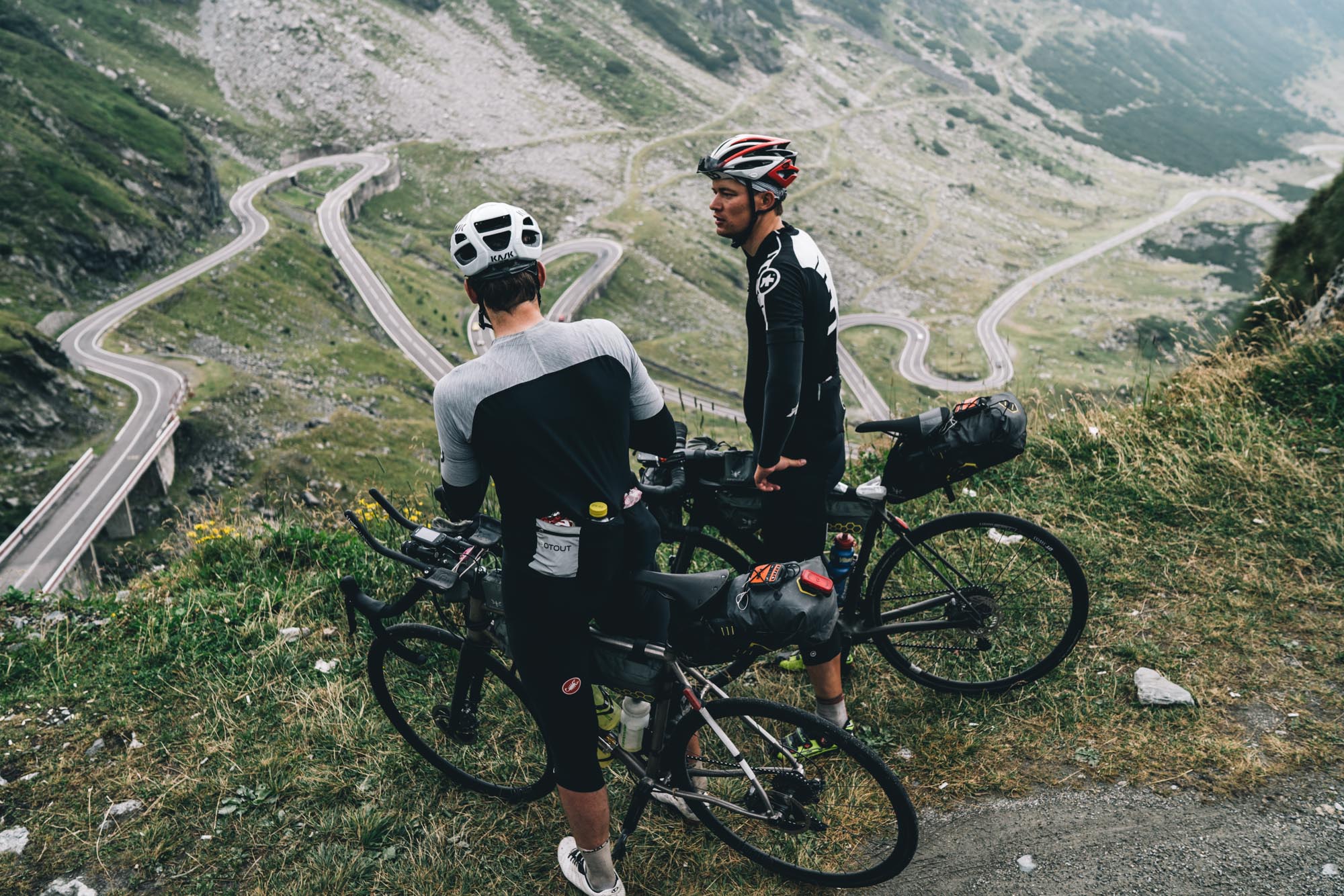
Eivind and Anders became so tired that when they saw a bear by the road in Slovakia they stopped to take photos. Only later did they realise the potential danger.
“Days three, four and five were pretty tough,” recalls Eivind. “We didn’t rack up as many miles as we wanted; it’s really tough sitting on your bike for 14 hours per day, just riding. And every time we saw other riders at various crossroads along the way, they were always going in the other direction! But we got used to it, found a rhythm, and once we knew we were going to complete it, the last week was fantastic,” says Eivind.
“We had a lot of great experiences. In between the suffering and the heat and the endless hours on the bike and the extreme amounts of food and water we had to consume, there were so many great sights. It was tremendously beautiful in places.”
The other great legacy to accompany his priceless memories is a new bike. The TCR is the ultimate excuse to scratch the n+1 itch, to choose a truly special bicycle for the odyssey ahead. For this, Eivind turned to J.Laverack, the custom titanium bike specialist in England. Specifying a J.Laverack J.ACK to his needs, Eivind selected a Dura Ace mechanical groupset, disc brakes for reassuring stopping power, and ENVE finishing kit. He also customised the bike’s design to incorporate a narrower 27.2mm seatpost for extra comfort, added a third bottle cage on the underside of the top tube, and for good measure had a TCR logo engraved on the irresistible titanium frame.
As memories of the summer fade and snow falls in Oslo, Eivind has changed the J.ACK’s tyres from slicks to studs. Bracing himself for a winter of cycling in -10 degree temperatures, the TCR logo is a discreet reminder of his extraordinary accomplishment at completing 4,200 hot, hilly, occasionally hellish and ultimately heroic kilometres in just 13 days 21 hours and five minutes. Winning was a bonus.
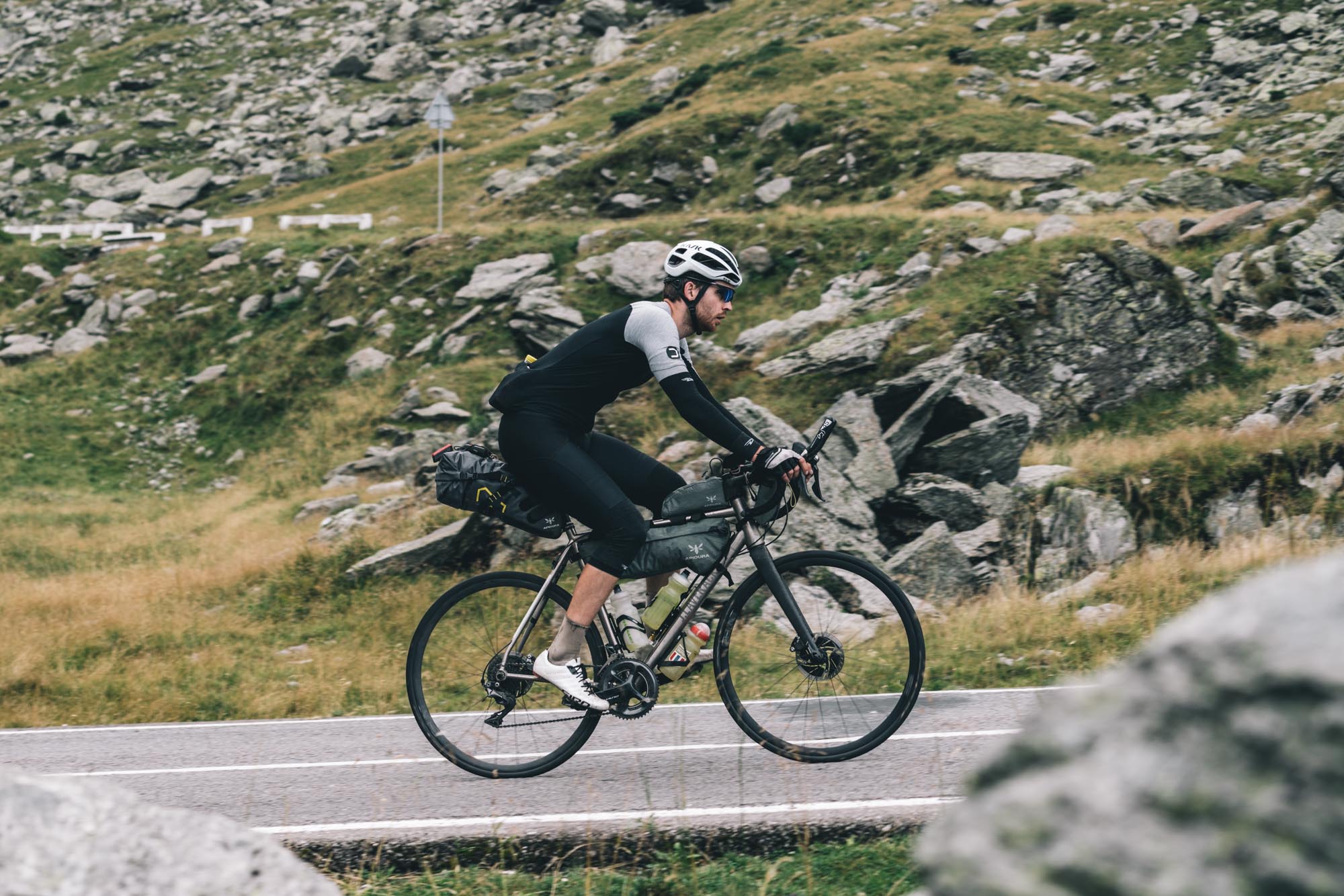
The J.ACK’s slick tyres will be replaced with studded tyres for winter riding in Norway.
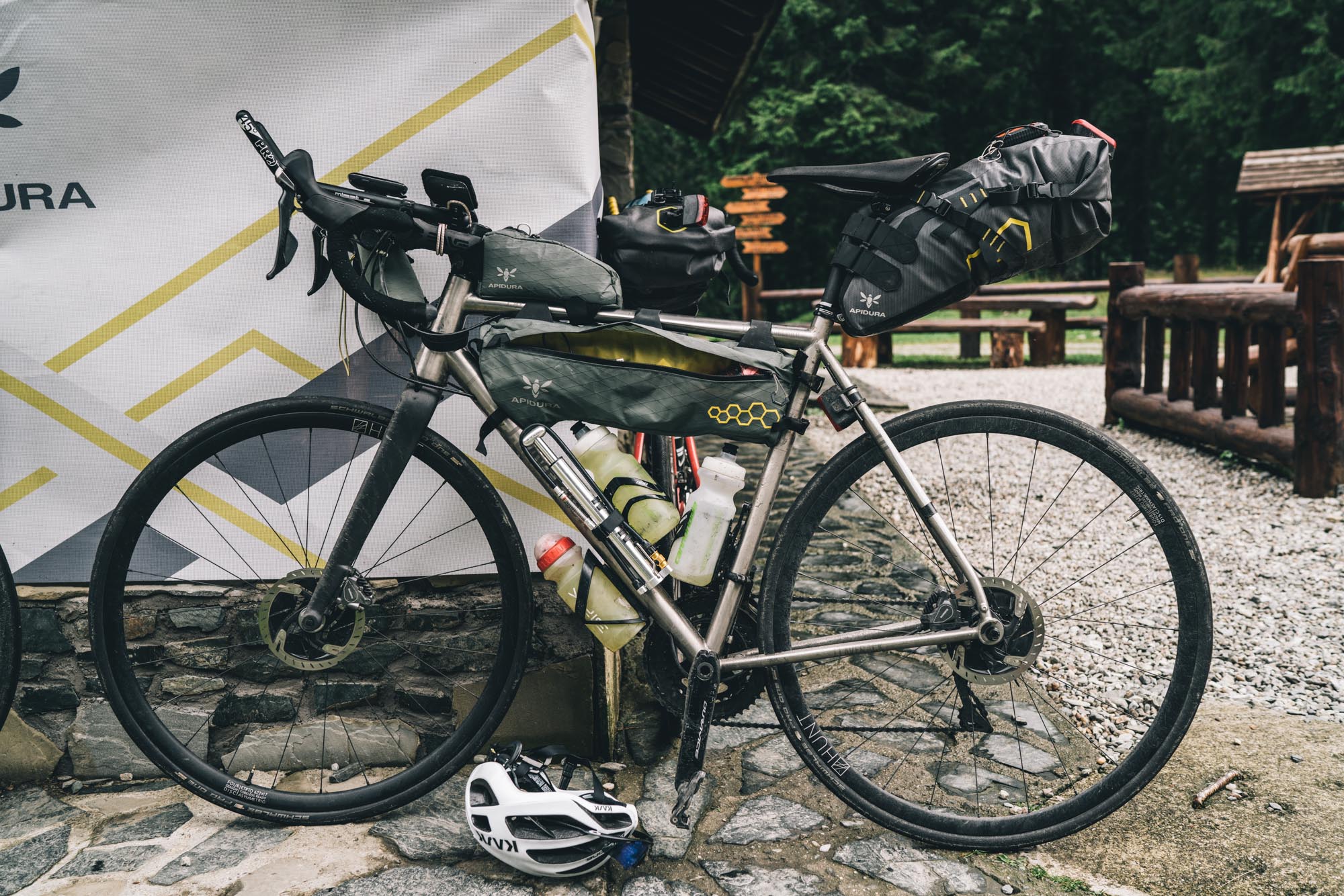
Eivind customised his bike with a narrower seat tube for comfort, a third bottle cage on the underside of the down tube, and a discreet TCR logo as a permanent reminder of his awesome ride across Europe.
To view the complete range of J.ACK bikes click here
Photographs by Kristian Pletten.



